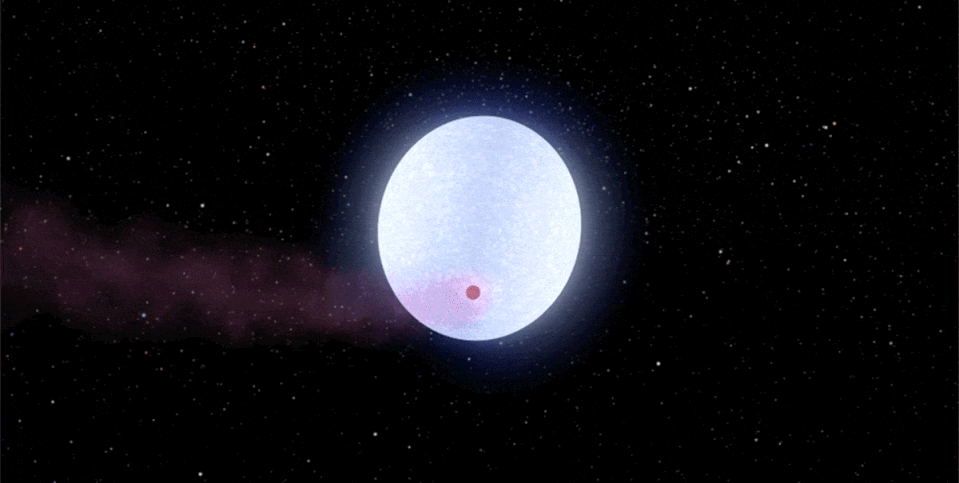This Hot Jupiter Is So Hot Right Now

Scientists have confirmed that "ultrahot Jupiter" KELT-9b is the hottest exoplanet ever discovered.
The planet, discovered in 2017, orbits KELT-9 670 light-years away from Earth and has a surface temperature of 7,800 degrees Fahrenheit.
The planet is so hot on its dayside, it actually tears hydrogen molecules apart.
KELT-9b is extremely hot. The exoplanet, first discovered in 2017, is hotter than some stars, and has a surface temperature of around 7,800 degrees Fahrenheit. It has a mass three times that of Jupiter and orbits a star 670 light-years away from Earth. Astronomers believe it’s the hottest exoplanet ever found.
It’s so close to its star that one revolution—the equivalent to a year on Earth—takes just one and a half days. It’s also tidally locked, meaning one side of the planet faces its star at all times. Methane, carbon dioxide, and water vapor can't form on its surface because of the extreme levels of ultraviolet radiation.
On the planet’s dayside, hydrogen molecules are ripped apart under the extreme temperatures, according to research published January 7 in The Astrophysical Journal Letters. But as those gases flow to the nightside of the planet, the hydrogen atoms are able to reconnect under the comparatively cooler conditions. Eventually, they flow back to the dayside, where they’re torn apart again.
"This kind of planet is so extreme in temperature, it is a bit separate from a lot of other exoplanets," graduate student Megan Mansfield, of the University of Chicago, says in a statement. "There are some other hot Jupiters and ultra-hot Jupiters that are not quite as hot but still warm enough that this effect should be taking place."
There’s virtually no chance that life could exist under these hot Jupiter conditions, and researchers aren’t holding their breath. The team of scientists used Spitzer Space Telescope, which will officially retire on January 30, to take infrared readings of the planet’s super-hot surface. It can measure small changes in temperature on the planet’s surface, which allowed scientists to gain a sharper understanding of the molecular processes happening on the planet.
The 300-million-year-old star that KELT-9b orbits, KELT-9, is actually tearing the planet apart, too. "KELT-9 radiates so much ultraviolet radiation that it may completely evaporate the planet," astrophysicist Keivan Stassun, of Vanderbilt University, said in a 2017 press release.
Whether it's torn apart or engulfed by KELT-9 when it eventually becomes a red giant, KELT-9b will ultimately suffer a terrible fate at the hands of its star.
You Might Also Like

 Yahoo News
Yahoo News 